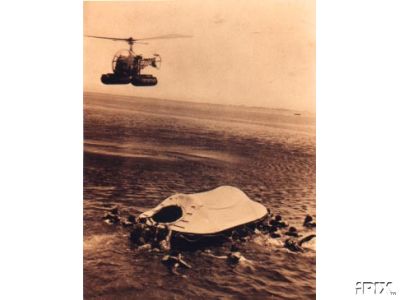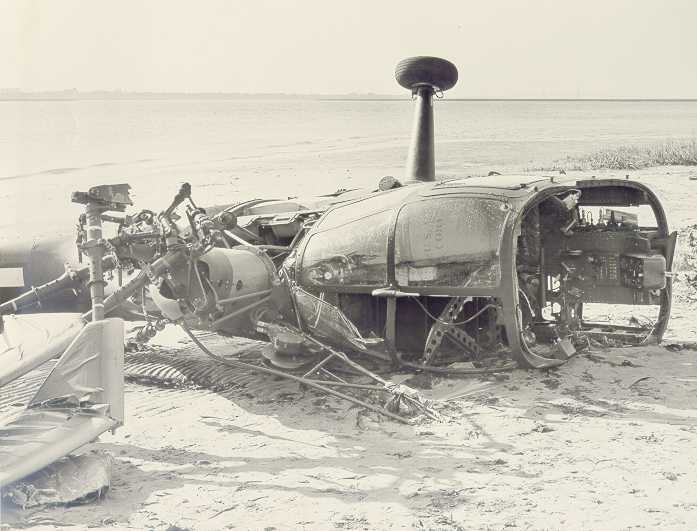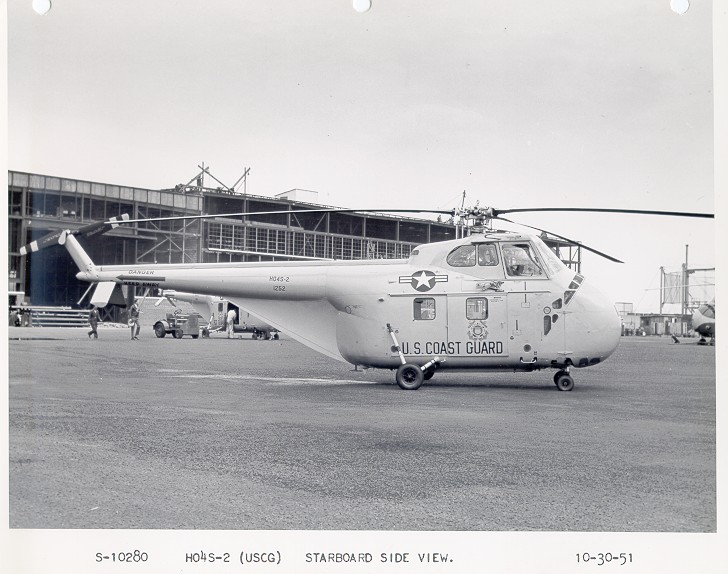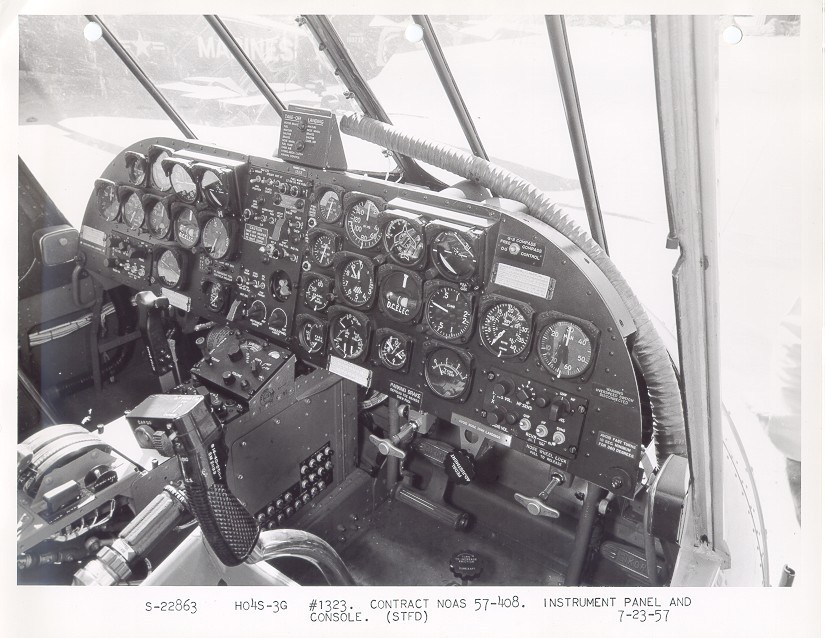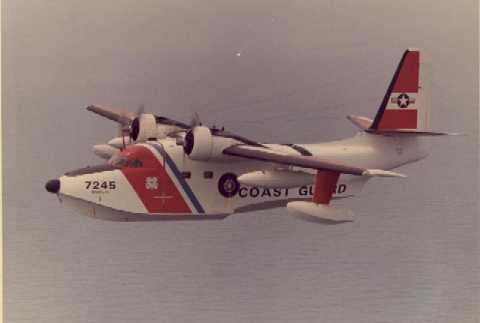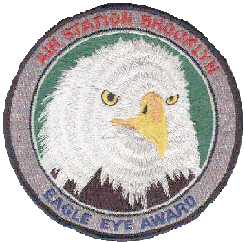
Updated: January 4, 2005
 |
USCG AIRSTA Brooklyn at Floyd Bennett
Field Established in 1938, the USCG Air Station Brooklyn had a long and proud history of service at Floyd Bennett Field. |

|

 |
USCG AIRSTA Brooklyn at Floyd Bennett
Field Established in 1938, the USCG Air Station Brooklyn had a long and proud history of service at Floyd Bennett Field. |

|
| On the basis of his belief that tests indicated the practicability of
ship-based helicopters, the Chief of Naval Operations separated the pilot
training from test and development functions in the helicopter program on
Dec 18, 1943. He directed that, effective 1 January 1944, a helicopter
pilot training program be conducted by the U.S. Coast Guard at Floyd
Bennett Field, under the direction of the Deputy Chief of Naval Operations
(Air). |
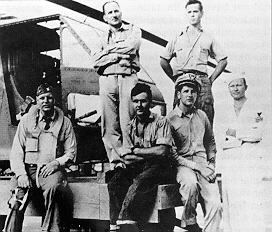 Commander Erickson (left) with some crewmen from CGAS Brooklyn. |

Commander Frank A. Erickson, USCG |
On Dec 20, 1943, Commander Frank A. Erickson, USCG, reported that Coast Guard Air Station, Floyd Bennett Field had experimented with a helicopter used as an airborne ambulance. An HNS-1 helicopter made flights carrying, in addition to its normal crew of a pilot and a mechanic, a weight of 200 pounds in a stretcher suspended approximately 4 feet beneath the float landing gear. In further demonstrations early the following year, the stretcher was attached to the side of the fuselage and landings were made at the steps of the dispensary. |
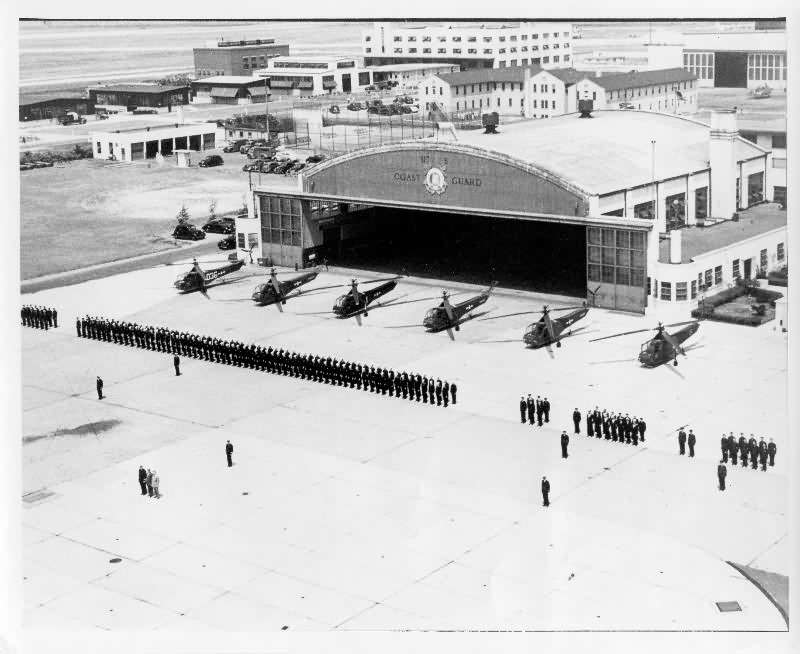
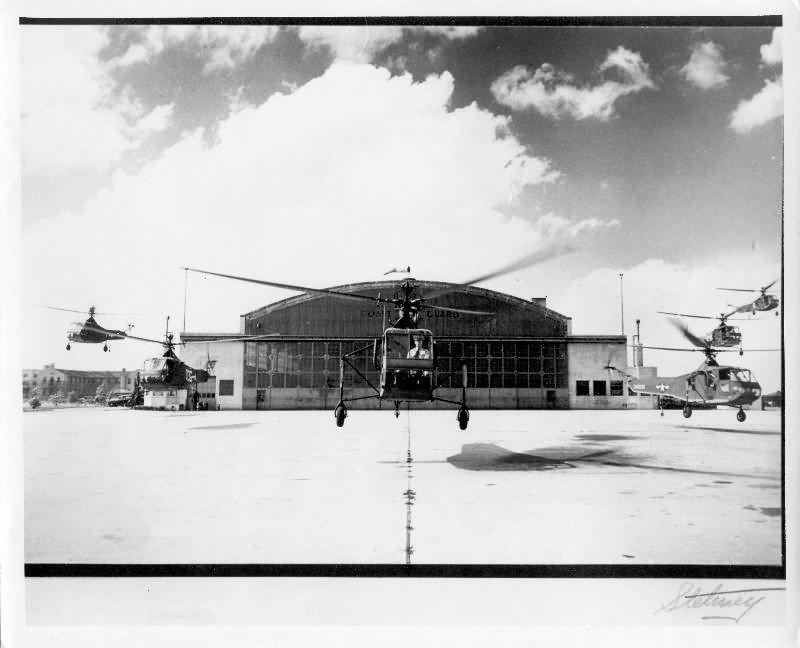
 A Rescue Hoist is Demonstrated by the son of Igor Sikorsky, a crewman at CGAS Brooklyn. |
Aug 11, 1944 - An electric powered rescue hoist was installed on an
HNS-1 helicopter at CGAS Floyd Bennett Field. During the ensuing 4 day
test period, in which flights were conducted over Jamaica Bay, the
feasibility of rescuing personnel from the water and of transferring
personnel and equipment to and from underway boats was demonstrated. Six
weeks later, a hydraulic hoist, which overcame basic disadvantages of the
electric hoist, was installed and successfully tested, leading to its
adoption for service use. |
| CGAS Brooklyn played an important role in the development of the helicopter as a search and rescue (SAR) tool. Sikorsky R-4 helicopters, equipped with large floats were based at Floyd Bennett Field. The rescue winch was developed here and became standard equipment on future rescue helicopters. The pioneer missions of CGAS Brooklyn demonstrated the value of helicopters as a valuable SAR, patrol, and law enforcement aircraft. |
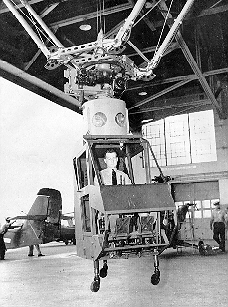 Early Helicopter Training Simulator at CGAS Brooklyn. |
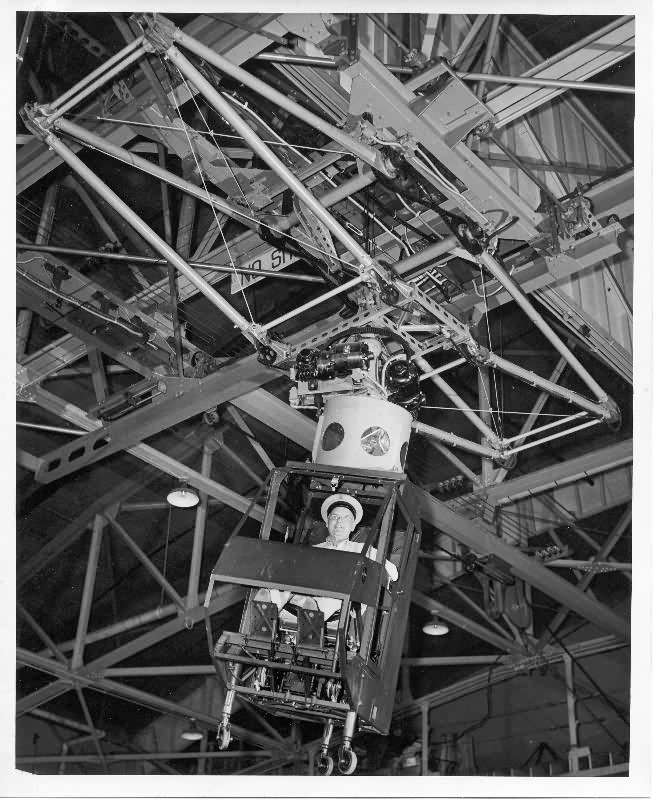

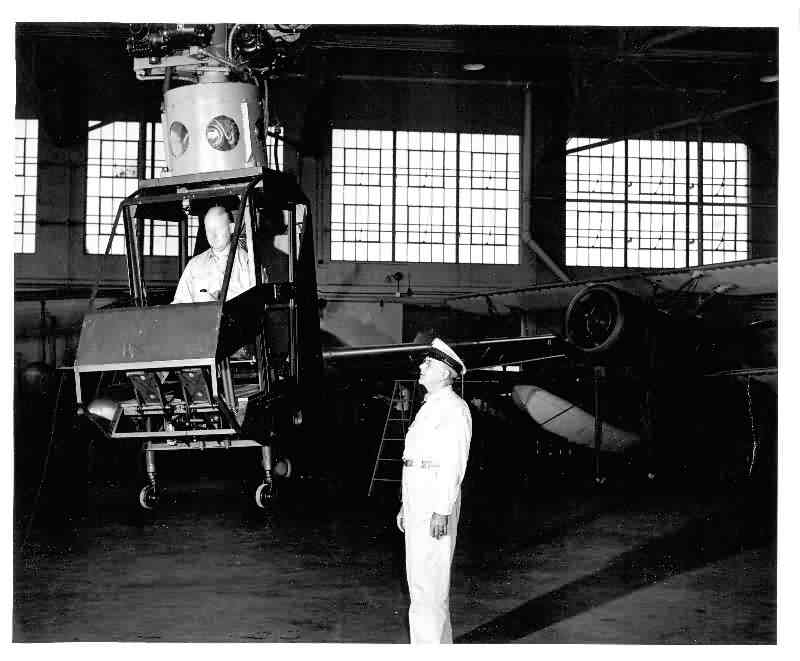
 Boeing PB-1G (B-17J) at CGAS Brooklyn in 1948 |
Boeing PB-1Gs (B-17J models) were based at CGAS Brooklyn after WW2. These long-range patrol aircraft could search large areas and drop survival equipment and supplies. |
